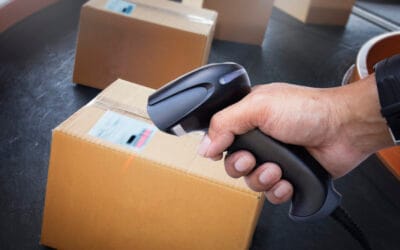An asset tracking system speeds up your daily operations and saves you time and money on the go. With a robust asset tracking system, you’ll be able to keep a clearer view of your asset register.
Maintaining an asset register is essential for auditing, tax, and insurance purposes. If you don’t have an asset tracking system in place, you run the risk of ghost and zombie assets which can cause significant issues.
What Is An Effective Asset Tracking System?
An effective asset tracking system will involve an app and web portal, as opposed to a spreadsheet. Spreadsheets are very manual and require time while also increasing the risks of human error and a subsequent loss of accountability.
If you’re using a cloud-based app and web portal, you can make changes on-site while you’re with your assets and then run reports on these changes remotely.
This will save you a massive amount of time, as you don’t need to make notes on-site and then transfer them onto a system later, and you can also share your asset tracking efforts amongst your colleagues. This also creates the possibility of maintaining accountability and transparency while you’re working remotely.
How Does Asset Tracking Software Work?
Asset tracking software allows you to log unique, digital asset profiles that mirror your asset register. Therefore, if you’re using your asset tracking software for IT asset management operations, you’ll be able to log each of your laptops.
Then, you can link your physical assets to their corresponding digital profiles by using asset tags. Asset tags will most likely take the form of QR codes or barcodes. Asset tags are auto-ID hardware that contain unique codes, allowing you to link them to unique asset profiles.
The benefits of using asset tags are that they save you time and give you more accountability on the fly. Every time you scan an asset’s tag, a few things happen.
- The asset’s profile opens
- The last seen location is updated
- The user who scanned the tag is recorded
- The time of the scan is recorded
This allows you to pinpoint when any edits to your assets take place, such as if an issue is recorded, and create an audit trail of where your assets are.
How To Use An Asset Tracking System
You will be able to record your assets as you tag them. Simply stick on your QR code and barcode and scan it and your asset tracking app will ask you if you want to create a corresponding asset profile.
You can also log your assets in advance and speed this up by cloning asset profiles or by using templates. Then, when you’re in the field tagging your tools and equipment, you can also run an audit to ensure that everything is accounted for.
Then, once you’ve set up your asset tracking system, how you use it is up to you. The best asset tracking software will provide you with multiple features that you can use to increase transparency and control over your assets.
For example, you will be able to use your asset tracking system as equipment checkout software to track who assets are rented out to, or you can use it as an issues management system.
All of your edits are updated on a customisable and exportable fixed asset register that you can run reports on. Once you have exported this register, you have something quick and simple that you can send to your finances team for tax returns, insurance operations and more.
To find out more about how itemit’s asset tracking system can help your business save time and money, you’ll be able to contact the team at team@itemit.com. You can also fill in the form below to start your 14-day free trial.
Asset Tracking System
Choose a better way to track your assets
Start your free 14-day trial now
Instant access. No credit card details required.
Related articles
Asset Disposition Explained: From Valuation to Final Disposal
Learn the essentials of asset disposition, from accurate valuation methods to final disposal strategies. Streamline your asset management process.
Hardware Procurement Strategies for Effective Asset Management
One of the main tasks for every developing business is effective asset management. Without any system, equipment or IT resources, valuable assets become lost or disorganised. Only an efficient asset-tracking system can save companies from such nagging hassles.
Choosing the Right Indoor Asset Tracking System
From demand created within the health sector to manufacturing, efficiency demands in indoor asset tracking go up. In business, companies want to track their valuable machinery, equipment, and other assorted assets, which are also in constant motion through indoor environments via complicated routes. Indoor asset tracking presents challenges different from those of the outdoor variety, which could employ GPS and other wide-capability technologies.



